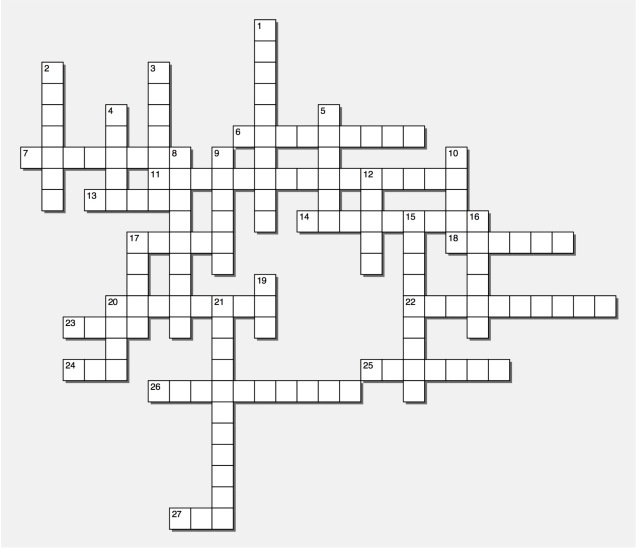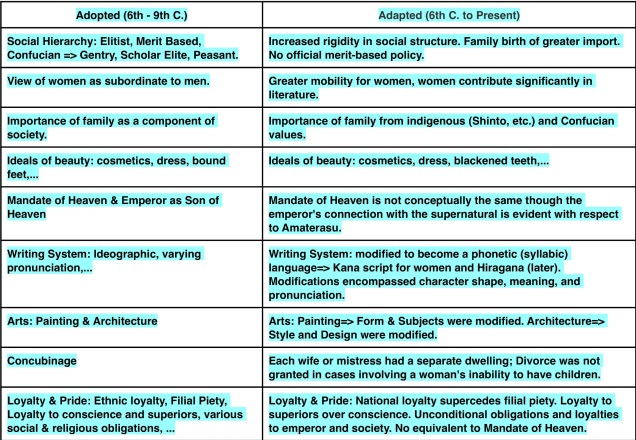AN03c3_Ch.12- Feudal Powers in Japan
Timeline: ~12th – 19th C.
FS: Japan’s uniqueness is reflected in its brand of Feudalism.
Main Idea: The political development of Japan, impacted by the Chinese model, contributed to a consolidation of power. That being a difficult task, given the topographical conditions, it wasn’t until the feudal period that true political unity was achieved. Japanese feudal society blended its unique geography, religion, and Chinese influence to form its own brand of feudalism. Stability, as in Europe, was a critically important trait of this social system. But, unlike Europe, the Japanese society remained in the grip of powerful local landowners for a longer period. In both cases, the collapse of the feudal system followed extensive contact with the cultures, products, and military might of foreign peoples.
CCSS…
I. Japan’s Classical Period (8th – Late 12th C. CE)
This period witnessed unprecedented peace and security under the rule of the Heian imperial dynasty. Japanese culture during this period flourished as it never had before. For this reason, Nara and Heian represent “Classical” Japan.
A. Height of Japanese Cultural Development
1. Nara Period (~710 – 794 CE.)
2. Heian Period (~794 – 1192 CE.=\> *Period of Peace and Tranquility*)
The Heian period was one of the longest periods of uninterrupted peace in early Japan; the period gets its name from the capital city, Heian-kyo (now Kyoto). The Heian government solidified the reforms of the Nara period. At the top of the official hierarchy was the Tenno, or “Divine Emperor.” The Emperor was both Confucian and Shinto; he ruled by virtue of legitimate descent from the Shinto Sun Goddess, Amaterasu. This has contributed to an unbroken imperial line of descent that stretches from before the Nara period.
3. Cultural Innovations
a. Haiku Writing
b. Noh Drama
4. Literature
a. *Tale of the Heike* tells the story of the Taira clan and its conflict with the emperor and Minamoto clan.
b. *Tale of the Genji* tells the story of the Minamoto clan and its conflict with the Taira clan.
B. Rise of Powerful Clans
1. Fujiwara Clan
The imperial advisors during the Japanese Classical Period. The Nara period was marked by struggles over the throne and which clans would “control” that throne. In order to quiet these disturbances, the capital was moved in 795 to Heian-kyo (Kyoto).
The Fujiwara began to exert greater influence on the Emperor. From 856 – 1086, the Fujiwara were the government of Japan. In 1155, however, the succession to the throne fell vacant, and the naming of Go-Shirakawa as Emperor set off a small revolution, called the *Hogen Disturbance*, which was quelled by the clans of the Taira and the Minamoto.
This was a turning point in Japanese history, for the power to determine the affairs of the state had clearly passed to the warrior clans and their massive private armies.
2. “Land Owning” Clans and Military Defense
In the earliest periods of Japanese history, warfare was largely confined to battles between separate clans; there was no separate class of soldiers. At the emergence of the Yamato state, new techniques of larger scale warfare seem to have been adopted including new technologies such as swords and armor.
The Nara government, faced with a country of sixty-six provinces of competing clans, tried to change the Japanese military system by conscripting soldiers. By the end of the Nara period, in 792, the idea was given up as a failure. Instead, the Heian government established a military system based on local militias composed of mounted horsemen. These professional soldiers were spread throughout the country and owed their loyalty to the emperor.
An important change occurred, however, in the middle of the Heian period. The samurai had evolved into private armies attached to the local aristocracy. From the middle Heian period onwards, for almost a thousand years, the Japanese military would consist of professional soldiers in numberless private armies owing their loyalty to local aristocracy and warlords. The result was growth in the power of the two greatest warrior clans, the Taira (or *Heike*) and the Minamoto (or *Genji*). The Genji controlled most of eastern Japan; the Heike had power in both eastern and western Japan.
C. Civil Strife Grips Japanese Society
After the accession of Go-Shirakawa, and later by his successor, a lord of the Taira began to slowly accrue massive power for himself in the Emperor’s court. It became apparent to the Emperor that the power of the Taira had to be diminished in some way, so he attempted to lay a military trap for the Taira lord with the aid of a minor Minamoto lord. The plot failed and opened an irreparable breach between the Taira and the retired Emperor, as well as the Minamoto. In 1179, the head of the Taira died and was replaced by his brother, a poor strategist. The Emperor, seeing he now had an advantage, began to dismiss the Taira in the capital, but the Taira began to fire court officials and marched on the capital, forcing the newly ascended Emperor off the throne. The dethroned Emperor enlisted the aid of the Minamoto and the great civil war began, ushering in the feudal age of Japan.
Minamoto Yoritomo began to build up strength. In 1185, he overran the Taira and forced them out of the capital. This war, and its aftermath, deeply affected the course of Japanese history. Minamoto Yoritomo then set up an alternative government in Kamakura; he called his alternative government, *bakufu*, or “tent government,” in contrast to the civil government of the Emperor located in Kyoto. This was a military government; it had two branches, one that administered the warriors or samurai , and the other that judged legal suits. The Kamakura military leader ruled as a shogun, or “supreme general.” Ostensibly, the job of the bakufu was simply military administration; in reality, the shoguns and their government eventually came to run the country. The relationship of provincial generals and lords to the shogun was roughly equivalent to the relationship of vassals to a lord, without the feudal European fief. The individual provinces were more or less independent; their lords, or *daimyo*, took oaths of allegiance to the shogun.
II. Japan’s Feudal Period: The Shogunates
A. Kamakura (~1185-1333/ Kamakura, Japan)
1. Mongol Invasion Repelled (The Kamikaze Legend)
In the 13th century, Kublai Khan, grandson of Chinggis Khan and Mongol Emperor (Yuan Shi-zu) of the Yuan Dynasty of China, envisioned a plan to conquer Japan. He wanted to make Japan a tributary state of the Mongol Empire. In 1274 and 1281 armies were despatched from the Korean peninsula and China to land in north Kyushu.
It was recorded that a thunderstorm harassed northern Kyushu in 1274 while in 1281 a typhoon hit northern Kyushu island. In both instances the Yuan armies suffered severe casualties from these natural calamities and the invasions were aborted. These “divine” winds have come to be known as *Kamikaze *which, especially during the war periods of pre-1945, have nurtured a belief in Japan’s sacredness.
2. Major Characteristics (Becomes Model for All Shogunates)
a. Rigid class/ social structure (China’s Neo-Confucianist Influence)
b. Zen Buddhism and the Warrior Ethic (China & Korea’s Influence)
c. Bushido Code or ‘Way of the Warrior’
d. A code of ethics for Japan’s feudal warrior class. A rough equivalent to Europe’s Chivalry (minus the romantic allusions).
e. Shinto, Buddhist, & Confucian influenced
f. “Saving Face” (The avoidance or elimination of shame)
g. Seppuku (Ritual Suicide)
B. Ashikaga (~1336-1573/ Kyoto, Japan)
Portuguese Arrive & Nanban Trade begins (~1543)
C. Tokugawa (~1603-1863/ Edo, Japan)
Most culturally influential and socially rigid of the three shogunates.
III. Summary Activity: Why it matters now.
An openness to adapting innovations from other cultures is still a hallmark of Japanese society.
Resources:
– World History: Patterns of Interaction
– Tale of the 47 Ronin
– Asia for Educators. Ed. Carol Gluck. Fourth edition, revised. Contemporary Japan: A Teaching Workbook, East Asia Curriculum Project/Columbia University. 12 May 2001.


